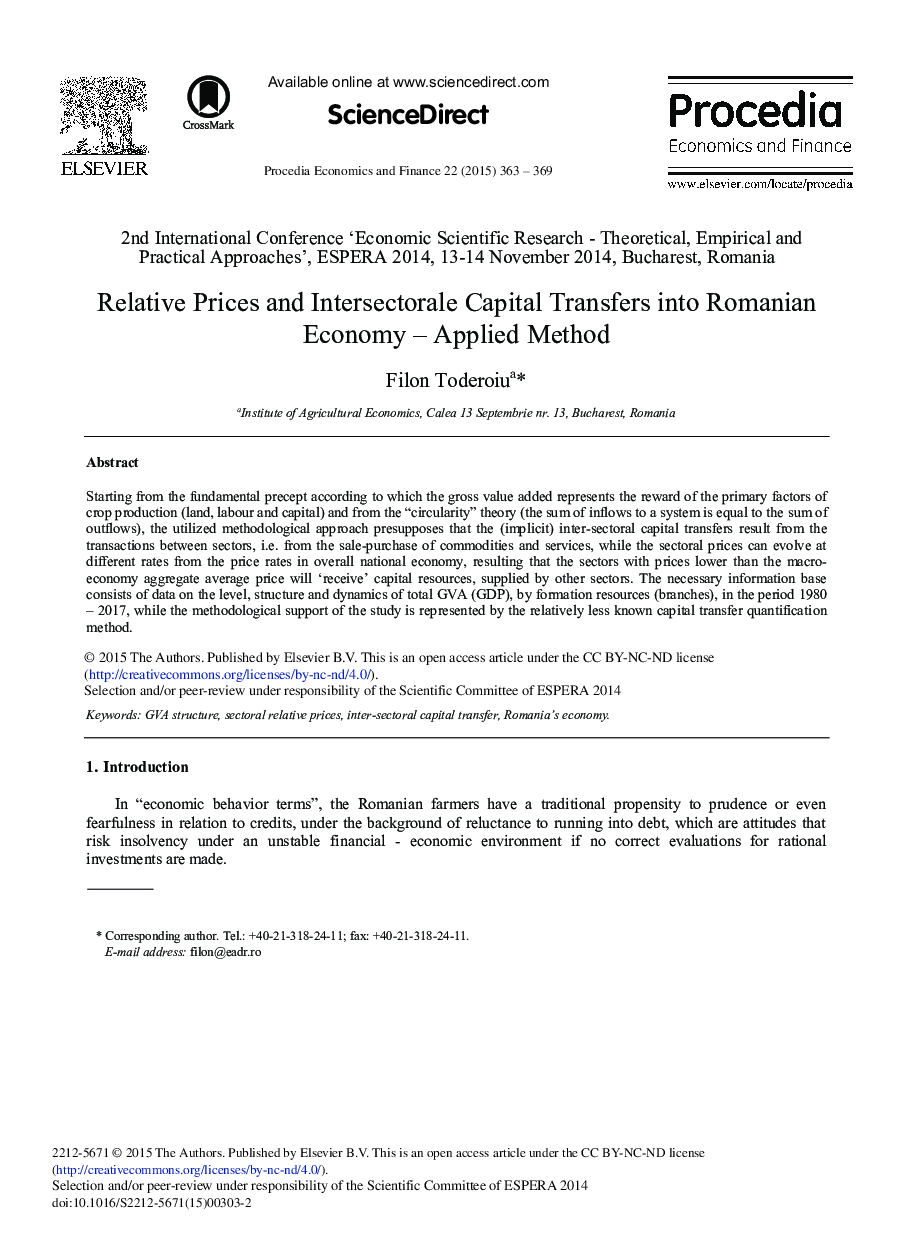| Article ID | Journal | Published Year | Pages | File Type |
|---|---|---|---|---|
| 979983 | Procedia Economics and Finance | 2015 | 7 Pages |
Starting from the fundamental precept according to which the gross value added represents the reward of the primary factors of crop production (land, labour and capital) and from the “circularity” theory (the sum of inflows to a system is equal to the sum of outflows), the utilized methodological approach presupposes that the (implicit) inter-sectoral capital transfers result from the transactions between sectors, i.e. from the sale-purchase of commodities and services, while the sectoral prices can evolve at different rates from the price rates in overall national economy, resulting that the sectors with prices lower than the macro-economy aggregate average price will ‘receive’ capital resources, supplied by other sectors. The necessary information base consists of data on the level, structure and dynamics of total GVA (GDP), by formation resources (branches), in the period 1980 – 2017, while the methodological support of the study is represented by the relatively less known capital transfer quantification method.
